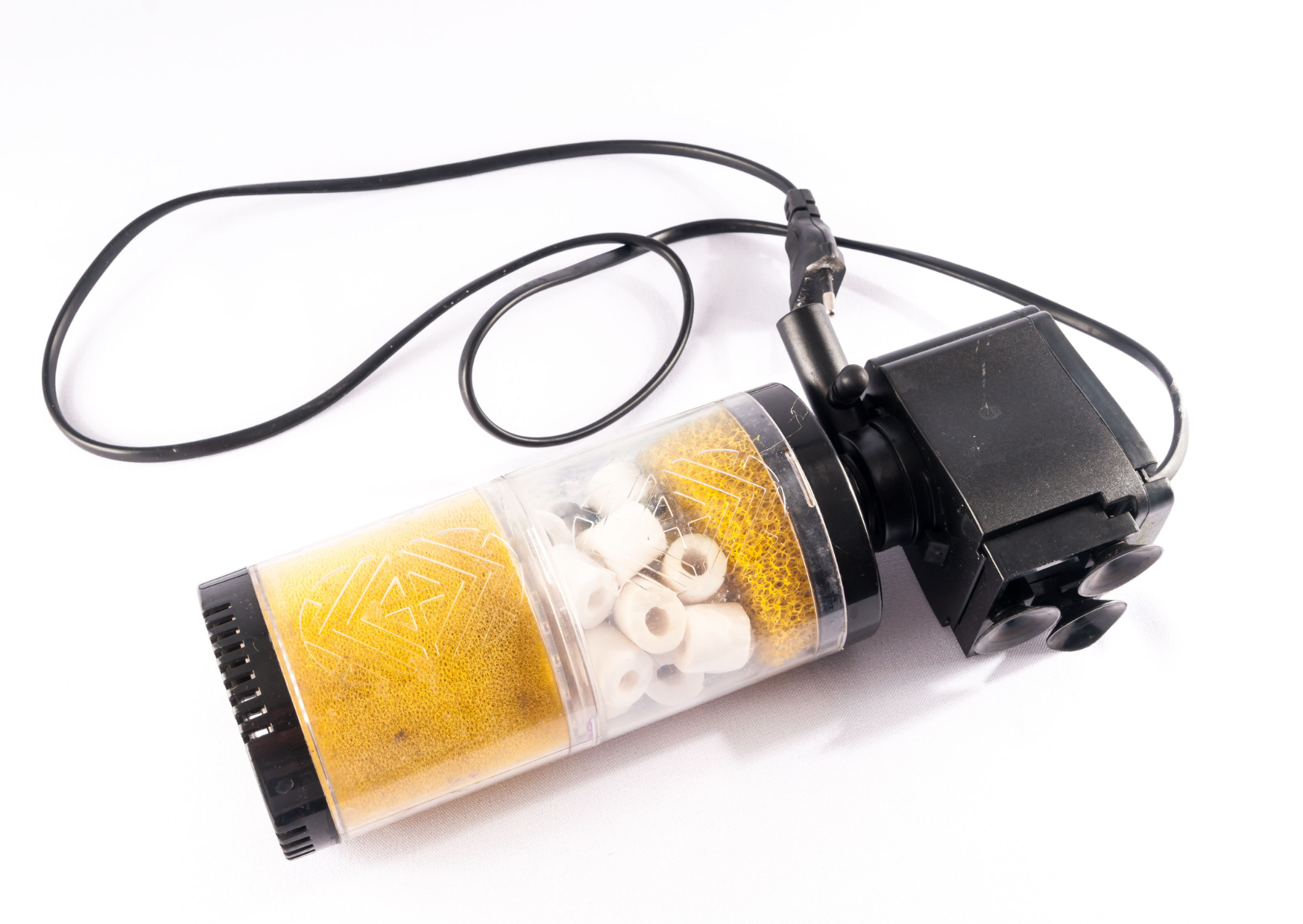Next working day delivery with Royal Mail Tracked 24
My filter flow has slowed down - what do I do?

My filter flow has slowed down - what do I do?
Filtering an aquarium effectively is very important, for both water quality and fish health. If the rate at which water is flowing through the filter decreases, it will produce less current for your fish and filter less water per hour through the sponges and filter media.
Internal Filters
If you notice the flow rate of your internal filter slowing down, there are a few things you can do to resolve the issue:
1. Power off the filter, remove the plug from the wall socket, and take the filter out of the aquarium. Always ensure you cut-off any power supply before handling any fish tank equipment. Water and electricity don't mix, there is a real danger of serious injury otherwise.
2. Remove the impeller to inspect it. You will generally have to remove a casing or cover, but most internal filters have easy access to impellers. Check that the shaft of the impeller isn't damaged, and that there is nothing blocking it - like plant debris or gunge. If the impeller cannot spin freely and fast, it will not generate water flow through the filter effectively. Impellers should be cleaned every month or two.
3. Check that the filter is assembled properly. Any gaps in filter casing or media baskets may affect water flow. Sometimes filter media is supplied in plastic bags, if these are not removed it will cause the flow to back up. Always inspect your filter baskets and media chambers prior to starting your filters.
4. Avoid panic-returns. Try not to be too quick at returning a filter which you deem faulty because of a low flow rate, especially one that has cultivated good bacteria on the media and sponge. If you return an internal filter to a retailer that hasn't been inspected or cleaned, you may find that the warranty doesn't cover "dirty filters" and end up out of pocket.
Air Driven Filters
Other filter types, such as sponge filters may also experience a degradation in flow. Sponge filters, or fry filters, are often used in breeding aquariums or smaller setups with delicate species such as shrimp, to avoid fish being sucked into filters. These are typically air-driven (as well as under gravel filters too) so performing the following checks are recommended:
1. Power off the air pump ensuring a non-return valve is in place on your airline so that water doesn't back flow into the pump. Pinching the airline with a clip or peg will also prevent this from happening.
2. Check for the obvious blockage to the airline, and remove any mould or debris that may be constricting airflow. Changing out the airline for new may also be a good idea, as these tend to degrade over time anyway.
3. Inspect the air pump. Check that there are no blockages to the outlets, and if you have multiple outlets, power it up and check to see that there is air flowing out of them all.
4. Check the diaphragm inside the air pump. If your air pump is diaphragm-driven, sometimes these can clog with dust or generally degrade. A replacement is usually available from the manufacturer, but a good clean can be just as effective.
5. Clean the filter. If you have a sponge filter giving it a good squeeze out into a bucket (filled with aquarium water to preserve bacteria) can often improve the ability for suction to flow. Undergravel filters are not easy to clean, but inspecting the surface area for clogging or blockage to the airflow chamber
6. Check the air flow chamber. Check that there is no blockages to the air flow chamber of the filter, such as detritus or filter media debris, ensuring that air can flow freely through it.
Hood Filtration

Some aquariums have built-in filtration in the hood, in the form of a filter media tray that trickles water back into the aquarium. In this instance, its recommended to perform the same checks as mentioned above for an internal filter, on the pump or powerhead used to feed the filter. These will generally be impeller-driven devices too.
To browse our range of internal filters please click here.
To browse our range of external filter please click here.
To browse our range of sponge filters for shrimp and fry please click here.
Photo credit(s): Canva Pro Licence






